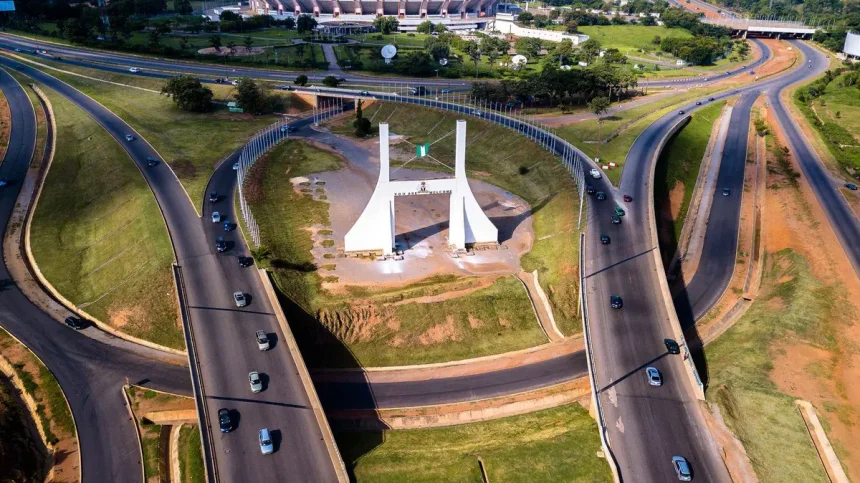Abuja, Nigeria’s capital once envisioned as a model of urban order and environmental harmony, is now buckling under the weight of unchecked development, collapsing infrastructure, and a climate crisis it is ill-prepared for. Despite being guided by a master plan hailed for its foresight, the city’s reality has become a grim contradiction of its founding vision.
Residents who once saw Abuja as an oasis of order are now caught in a daily struggle for comfort and survival. From the sweltering heat of the dry season to floods that overwhelm poorly planned neighborhoods, the city’s environmental failures are becoming too obvious to ignore.
What was once marketed as a city of modern design and climate resilience has evolved into a patchwork of hastily constructed estates, rising temperatures, and vanishing green spaces.
From Vision to Disarray
Conceived in the late 1970s to relieve pressure on overcrowded Lagos, Abuja was meticulously planned. The city’s original blueprint emphasized environmental protection, spatial order, and urban expansion aligned with ecological suitability.
But in the decades since, that vision has steadily eroded. According to town planners, vast tracts of green space have disappeared, while new constructions spring up without regard for zoning codes or sustainability.
“Abuja was designed to be a garden city,” said Nathaniel Atebije, a former president of the Nigerian Institute of Town Planners. “Now, the trees are gone, and tiles are everywhere. It’s turning into a heat trap.”
The city’s green area, once projected to cover a third of its land, has dwindled though official figures dispute the extent. Meanwhile, Abuja’s population has ballooned from under a million in the 1990s to more than 4.2 million in 2025, straining infrastructure and public services.
A City on the Edge
Residents describe conditions that are growing increasingly unlivable: narrow roads choked with traffic, stagnant gutters, air pollution, and suffocating heat.
“I’ve lived in three districts in two years,” said Ibukun Adaramola, a schoolteacher who relocated from Akure. “Each time, it was either the heat, noise, or flooding that forced us out.”
In Gwagwalada, where she first settled, Adaramola said the midday sun was so intense she joked that the district “felt close to hell.”
Her eventual move to Wuye brought some relief, but at a cost. Rent is higher, and access to open space remains limited.
Climate and Chaos
Environmental officials admit the city is under strain. At a recent sustainability summit, Environment Minister Balarabe Lawal warned that Abuja is facing serious environmental threats, including “frequent flooding, poor waste management, and rising greenhouse emissions.”
Those warnings are backed by climate experts, who note that urban heatwaves are intensifying globally and Abuja is no exception.
The Nigerian Meteorological Agency recently warned that residents of Abuja and northern cities could face life-threatening heatwaves without protective measures.
Tiles, once favored for aesthetics, now contribute to the city’s overheating, replacing gardens and lawns with surfaces that retain heat. A law requiring tree planting in residential compounds exists, but enforcement is virtually nonexistent.

Developers Under Scrutiny
Real estate developers have also come under criticism for prioritizing profit over livability.
“We’re seeing buildings go up where two windows from different apartments almost touch,” said Akintoye Adeoye, President of the Real Estate Developers Association of Nigeria. “Many projects lack proper ventilation, setback, or even approval.”
Adeoye acknowledged that while the Federal Capital Territory Administration has begun removing illegal structures under Minister Nyesom Wike, enforcement remains inconsistent.
Some landlords argue they’re working within constraints set by estate developers and housing trends. Others shift responsibility to tenants who prioritize appearance over environmental functionality.
“It’s a shared failure,” Adeoye admitted. “The government looks the other way. Developers cut corners. And residents don’t demand better.”
The Master Plan in Jeopardy
Architect and urban planning consultant Bodunrin Oguntoye said the erosion of Abuja’s original design is a direct result of compromised governance.
“Developers often build without regard for climate or sustainability,” Oguntoye said. “Green zones are routinely rezoned for commercial or residential use. Informal settlements are expanding. We’ve lost control of the plan.”
These concerns are echoed by environmental advocates.
“The illegalities we see are not just planning failures they’re political,” said Philip Jakpor, head of the Renevlyn Development Initiative. “Powerful individuals acquire green zones and convert them into private properties. Meanwhile, the vulnerable are pushed to flood-prone outskirts.”
No Enforcers in Sight
Atebije, the town planner, believes the city’s problems are less about regulation and more about enforcement.
“We have the rules. But we don’t have the personnel, equipment, or political will to enforce them,” he said.
“Before development control teams arrive at illegal sites, the buildings are already completed. There aren’t enough vehicles or staff to monitor every district.”
Still, he insists that change is possible.
“If we are serious, if enforcement is impartial, we can reverse some of the damage. But it will require courage and no political compromises.”
A Warning for the Future
Abuja’s experience serves as a cautionary tale for rapidly growing cities across Africa. Without urgent policy reform and climate-sensitive urban planning, the future of Nigeria’s capital could resemble a permanent state of crisis.
For residents like Rita Agbo, the dream of Abuja remains just that a vision yet to be realised.



